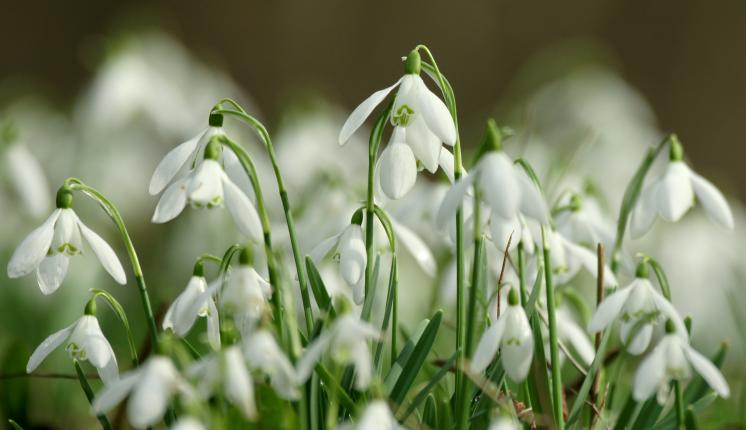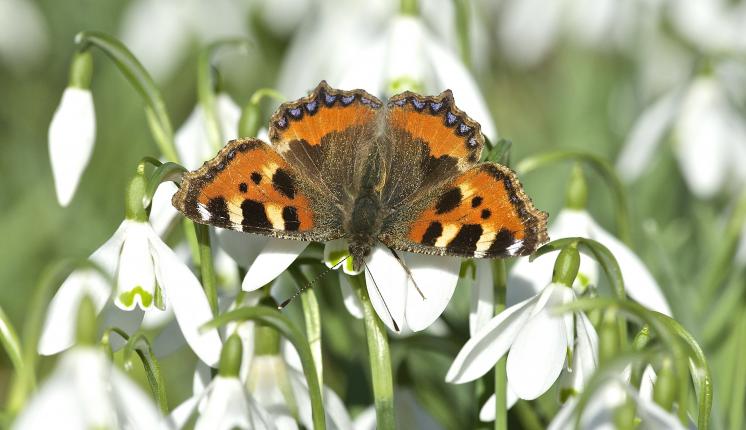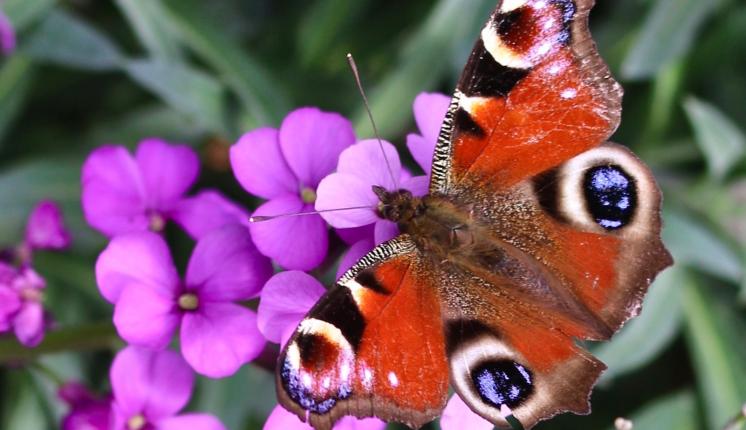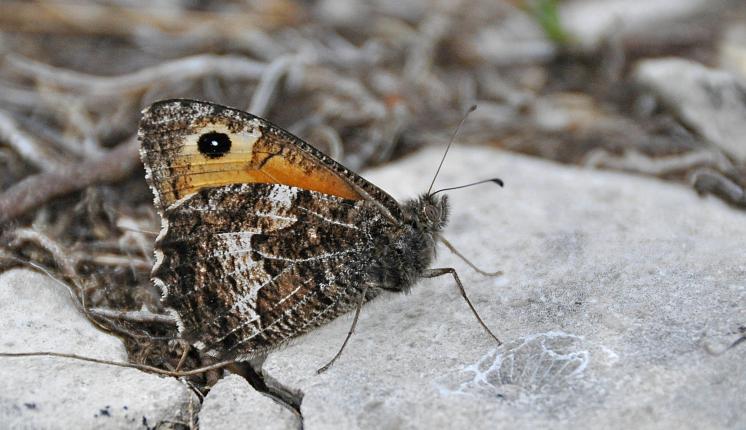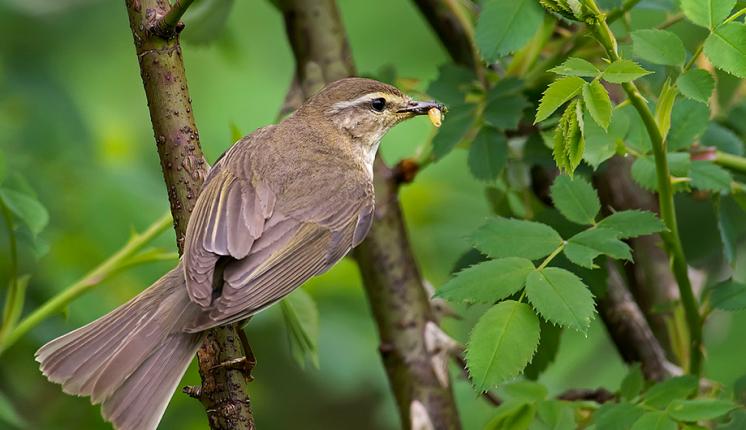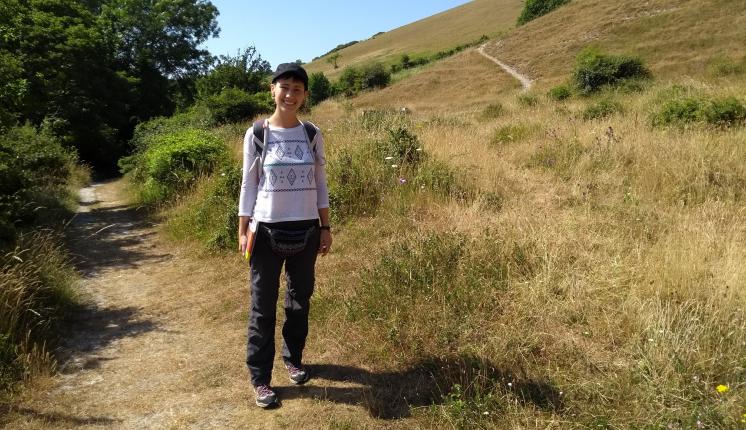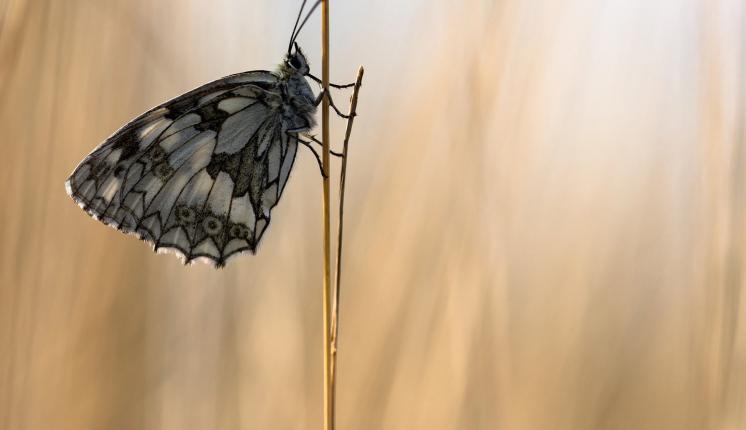Keep up to date on all of our latest news by signing up for our free e-newsletter.
-
Dig It – February Tips from the Secret Gardener
Snowdrops are one of the earliest spring bulbs to bloom, providing a useful source of nectar for bees and butterflies such as the Red Admiral, Small Tortoiseshell and Brimstone.
-
Dig it – January Tips from the Secret Gardener
It is resolution time again so why not choose to help butterflies and moths in your garden this year? Here are five suggestions for activities to engage your brain and body.
-
Munching Caterpillars Munches On
Butterfly Conservation's (BC) Senior Education Officer, Kate Merry, takes some time out to talk about BC's Munching Caterpillars project - what it has achieved so far and plans for the future...
-
Let’s Talk About The Weather
Talking about the weather has become more than idle chatter. The trends are hard to ignore and climate change is no longer the elephant in the room. But what does it mean for butterflies and moths?
-
Dig It – December Tips from the Secret Gardener.
How flowery is your garden looking now? There are still a few butterflies around such as the Red Admiral, so it’s useful to note if you have any nectar plants available for them.
-
Fritting About in Wales
From May to September around 90 volunteers across Wales report their sightings of Fritillary butterfly species. They are all compiled into a newsletter, fondly known as ‘Frits About’ which is now in its 11th year. You can find it via the Butterfly Conservation Wales web pages.
-
Scottish Members celebrate
The annual Scottish Member's Day was extra special this year. Find out what our members did to mark the occasion.
-
Dig it – November tips from the Secret Gardener
Rowan provides fuel for pollinating insects and is an important foodplant for several caterpillars
-
Exmoor ponies saving butterflies in Sussex
Steve Wheatley, Regional Conservation Manager for South East England, explains how the Grayling butterfly is relying on Exmoor ponies in Sussex.
-
Moving Towards Sustainable Forestry in Europe
Conservation Officer Patrick Cook explains how sustainable forestry can help butterflies and moths.
-
Meet the science team: introducing Rachel Jones
Introducing Rachel Jones, Senior Ecologist at Butterfly Conservation who is currently researching the highly restricted Lulworth Skipper in Dorset, funded by a NERC iCASE Studentship with the University of Exeter and Butterfly Conservation.
-
Do shifts in butterfly and moth phenology affect spring-breeding songbirds?
UK Butterfly Monitoring Scheme (UKBMS) data has been used in a study led by British Trust for Ornithology (BTO) researcher Dr Samantha Franks. The study, published in the journal Global Change Biology, investigates the potential impact of climate change on songbird populations in the UK.
-
The value of citizen science
Meaningful species population trends from mass-participation citizen science: the Big Butterfly Count example
-
The science behind The State Of Nature report
A recently published large-scale collaboration, led by the RSPB, analysed the scientific data behind the State of Nature UK reports from 2013 and 2016. Professor Tom Brereton explains the findings of this paper, demonstrating just how much work goes into proving that the long-term declines in our wildlife are real and scientifically robust.
-
Microclimate refugia
Richard Fox explains how cool microclimates reduce the extinction risk for climate threatened plants and insects in England
-
UK Butterflies Outstanding Contribution Award for 2018 winners
Sarah Meredith, Butterfly Conservation’s Large Blue Conservation Officer and David Simcox, of Habitat Designs Ltd and project manager for the Large Blue Committee have been jointly awarded the UK Butterflies Outstanding Contribution Award for 2018.
-
Dig it – September Tips from the Secret Gardener
Heleniums bring both colour and a food source for pollinators to your flowerbeds in autumn.
-
Beauty and the beasts
The Met Office are predicting a mild start to autumn which could lead to a rise in some of the biggest and most glamorous species found in the UK.
-
Swapping the sierras for the seaside
Paloma Oteo Golderos, a biology from the University of Granada in Spain, has spent the summer working with Butterfly Conservation as part of an Erasmus traineeship. Here she explains why she swapped the Sierras for the seaside on the hunt for butterflies.
-
Could nature hotspot be saved from golf course development?
Paul Kirkland, Butterfly Conservation Director, Scotland, reveals why the Scottish Government’s decision to ‘call in’ proposals to develop a wildlife hotspot into a golf course offers nature lovers some hope.
-
Drought and butterflies
Only 12 hours after Sir David Attenborough explained the personal and scientific benefits of Big Butterfly Count to the watching nation, I was standing under a tree in the pouring rain.
-
Chequered Skipper update
It’s been almost two months since the Chequered Skipper butterfly took to the wing in England for the first time in 40 years. So what’s been happening since then?
-
Dig It – June Tips from the Secret Gardener
This month the Secret Gardener investigates the best plants to provide caterpillar food and flying-fuel for both day and night flying moths.
-
Mad for moths
Moth Night is the UK’s annual celebration of moths and moth recording, a chance for naturalists to raise the profile of these much-maligned creatures, for conservationists to gather useful data and for members of the public to experience the dazzling diversity of these important insects.
-
Calling nature lovers and gardeners in Surrey
BC's Small Blue project aims to improve chalk downland habitats on the North Downs, mainly between Guildford and Dorking, for Britain’s smallest butterfly. Project Officer Fiona Haynes tells us more....
-
All together now
Butterfly Conservation Ambassador and gardening writer Kate Bradbury explains how if we all find some space for butterflies and moths we can make the world a happier and more healthy place to live.
-
Dig It – April Tips from the Secret Gardener
The Secret Gardener's star plant which has been flowering without stopping, since it was planted couple of years ago, is the Perennial Wallflower Erysimum ‘Bowles Mauve’.
-
Developing and improving statistical models of species change
BC is one of the largest collectors and holders of biological data in the UK, running world-renowned recording and monitoring schemes on butterflies and moths that collectively total in excess of 40 million records by over 70,000 recorders.
-
Shedding light on moth declines
Back in 2004, when Rothamsted Research and Butterfly Conservation first uncovered the significant, long-term decline in moth abundance, artificial light at night (ALAN) was highlighted as a potential contributor to the observed trends.
-
Heath Fritillary – the science behind the management
The Heath Fritillary Melitaea athalia is a priority species with a restricted distribution in the south of England, occupying an area of less than 1km2 in the UK.


